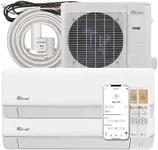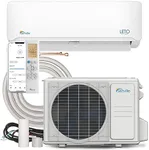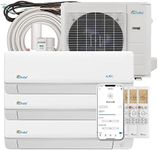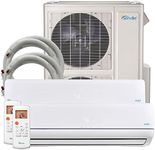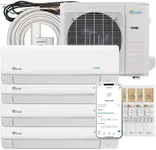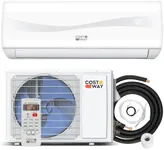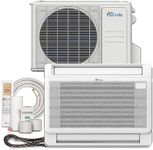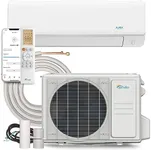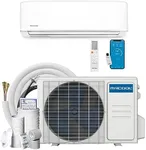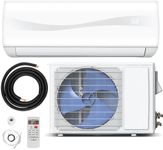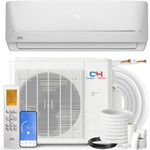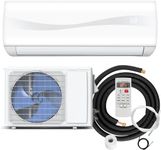Buying Guide for the Best Diy Mini Split
Choosing a DIY mini-split air conditioning system can be a great way to efficiently cool or heat your space without the need for professional installation. These systems are designed for easier setup, making them popular among homeowners who enjoy hands-on projects. To find the best fit, it's important to understand the main features and specifications that affect performance, ease of installation, and long-term satisfaction. By focusing on your room size, climate, and comfort preferences, you can narrow down the options and select a system that meets your needs.BTU Rating (Cooling/Heating Capacity)The BTU (British Thermal Unit) rating tells you how much cooling or heating power the mini-split can provide. This is crucial because a unit that's too small won't effectively control the temperature, while one that's too large can waste energy and cycle on and off too frequently. BTU ratings are usually divided into ranges: small rooms (9,000-12,000 BTU), medium rooms (12,000-18,000 BTU), and large rooms or open spaces (18,000-24,000+ BTU). To pick the right BTU rating, measure your room's square footage and consider factors like ceiling height, insulation, and sun exposure. Matching the BTU rating to your space ensures efficient and comfortable operation.
Number of ZonesThe number of zones refers to how many separate indoor units the system can support, allowing you to control the temperature in different rooms or areas independently. Single-zone systems are ideal for cooling or heating one room, while multi-zone systems can handle two or more spaces. If you want to control the climate in several rooms, look for a multi-zone system, but if you only need to address one area, a single-zone unit will be simpler and more cost-effective.
Installation ComplexityDIY mini-splits are designed for easier installation, but the level of difficulty can still vary. Some systems come with pre-charged lines and quick-connect fittings, making them more user-friendly, while others may require more technical steps. Simpler systems are better for beginners or those with limited tools, while more complex setups might suit experienced DIYers. Consider your comfort level with home projects and read the installation instructions to ensure you choose a system you can confidently install.
Energy Efficiency (SEER Rating)The SEER (Seasonal Energy Efficiency Ratio) rating measures how efficiently the mini-split uses electricity to cool your space. Higher SEER ratings mean better energy efficiency, which can lower your utility bills and reduce environmental impact. SEER ratings typically range from around 13 (basic efficiency) to 20+ (high efficiency). If you plan to use the system frequently or live in a region with high energy costs, a higher SEER rating can be a smart choice. For occasional use, a moderate SEER rating may be sufficient.
Noise LevelNoise level, usually measured in decibels (dB), indicates how loud the indoor and outdoor units will be during operation. Lower dB values mean quieter performance, which is especially important for bedrooms, offices, or other quiet spaces. Noise levels can range from about 20 dB (very quiet) to 50 dB (noticeable hum). If you are sensitive to noise or plan to install the unit in a quiet area, look for models with lower noise ratings.
Control OptionsControl options refer to how you can operate the mini-split, such as with a remote control, wall-mounted panel, or smart features like Wi-Fi connectivity and app control. Basic systems may only offer a remote, while advanced models can be integrated with smart home systems for scheduling and remote access. If you value convenience and want to control your system from your phone or set up automation, look for units with smart features. For simple needs, a standard remote may be all you need.
Warranty and SupportWarranty and support cover the manufacturer's guarantee and the help available if you run into issues. Longer warranties and responsive customer support can provide peace of mind, especially for DIY installations. Warranties typically range from 1 to 7 years for parts and compressors. If you want extra assurance, choose a system with a longer warranty and good reviews for customer service.
